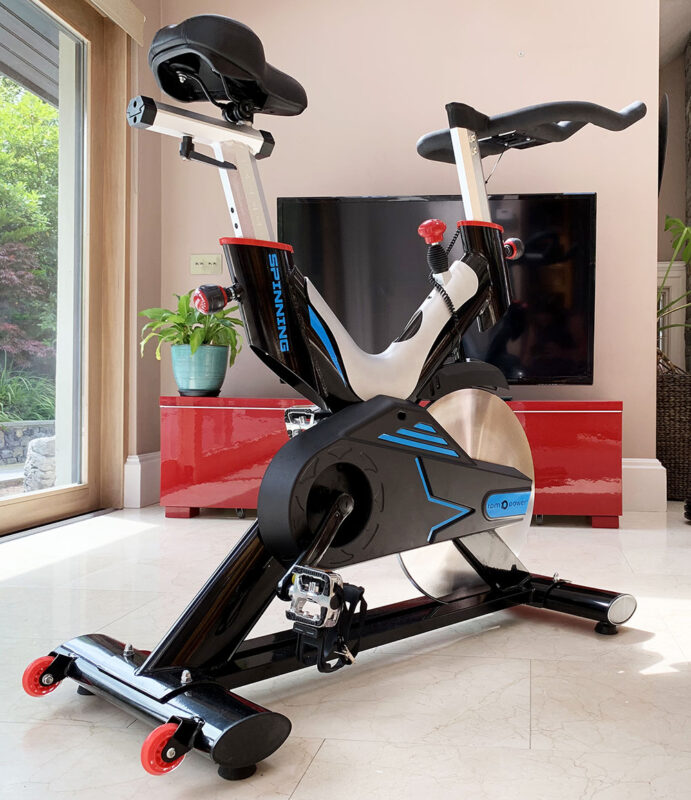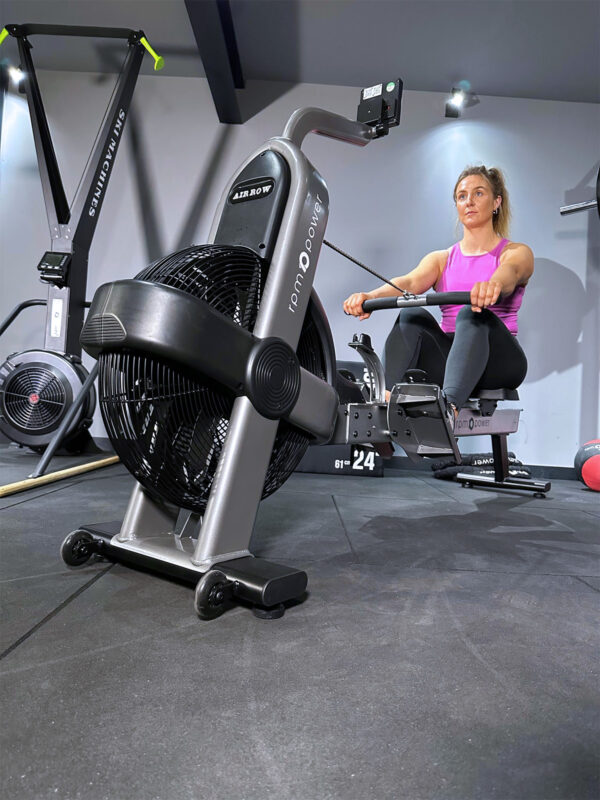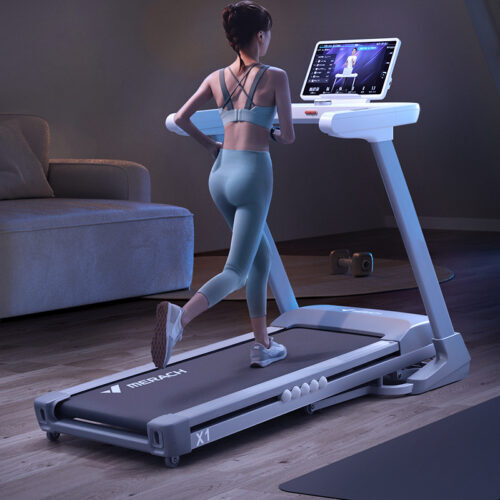FITMAS DEALS
Give the gift of Fitness!
Maintaining the integrity of your fitness equipment stands as paramount in safeguarding the longevity and optimal performance of your RPM Power product. Regular servicing is imperative to mitigate the risk of damage. While items such as dumbbells and weight plates may necessitate minimal upkeep, our cardio equipment, sectorized machines, and cable racks may require periodic maintenance to uphold their functionality and durability.
We have made a concise maintenance checklist of our equipment below so you can use it as a reference on how to maintain your equipment.

Sweat can be potentially corrosive to certain materials and also smell if left uncleaned. Use either a wet cloth or antibacterial spray to wipe down your unit, and ensure you dry it afterwards to avoid rusting.
Inspect your multi-gym or rack regularly when using to ensure the machine is balanced and that is sits level on the floor.
Inspect the bolts for looseness and tighten if necessary. Examine cables, handles and grip for any wear or damage. Finally, look close at the weight stacks to ensure they are aligned and accurately moving up and down.
Instances of squeaks or friction often indicate potential cable breakage. Addressing this concern involves applying products such as WD-40 Dry Lube or a 100% Silicone-based lubricant to the cables and guide rods of machine joints. This practice guarantees a seamless workout experience while enhancing the longevity of your cables. Utilize a clean towel or rag to apply the lubricant. Do NOT use an Oil Based Lubricant
Examine nuts and bolts to ensure they are appropriately tightened, adjusting as necessary with a wrench. Exercise caution to avoid over-tightening
Thoroughly examine the cable ends to confirm proper attachment. Verify that the pins are securely in place and inspect the cable coating for any signs of chipping or cracks. Additionally, assess the cable tension, ensuring there is no slack and adjusting if it is overly tense.
It is particularly important that you ensure the grommets/screws connecting the cable ends to the rack are regularly tightened. This will prevent the cable from coming free from the main frame or handles during use. Please see our cable maintenance video for more info.
Check these regularly for excessive wear. Lubricate the bushings and bearings yearly and if need of replacement please contact us.
Ensure there is no chrome peeling from the shaft and no divots on the rods. Maintain cleanliness by wiping away any dirt and grime, and apply small amounts of silicone lubricant to the guide rods to keep them lubricated.
We have previously advised performing this maintenance on a monthly basis; however, if not feasible, ensure it is conducted bi-annually. It is imperative to utilize a silicone-based lubricant, as it guarantees the optimal efficiency and smooth operation of your cable machine.
Regular semi-annual inspections of your cable gym equipment are essential to ensure its longevity and optimal performance. These inspections encompass a thorough examination of various components, including nuts, bolts, cable ends, guide rods, and shafts. It is crucial to check for signs of wear and tear such as chipping, cracks, or peeling chrome. Additionally, adjusting cable tension and applying silicone-based lubricant to guide rods are vital maintenance steps.

Sweat can be potentially corrosive to certain materials and also smell if left uncleaned. Use either a wet cloth or antibacterial spray to wipe down your unit, and ensure you dry it afterwards to avoid rusting. Clean the LCD Screen with a damp (but not soaking) cloth and then dry completely.
Verify that your bike is operating smoothly and that the machine rests evenly on the floor. Additionally, conduct a thorough check to ensure no small or concealed items are lodged beneath the unit, as they may pose a risk of damage in the future.
Inspect the bolts for looseness and tighten if necessary. Examine cables, handles and flywheel for any wear or damage.
Begin by wiping it down with a damp cloth to remove any surface dirt or debris. Next, use a gentle cleaner or mild soap solution to spot clean any stubborn stains. Ensure the belt is completely dry before using the bike again to prevent slipping or damage. Regular maintenance of the belt helps to prolong its lifespan and ensures smooth operation during workouts.
Examine your exercise bike meticulously, checking for any visible signs of welds, frame irregularities, or loose wire connections that may have developed over time.
Inspect the bike’s pedals for smooth rotation at minimal resistance. Also, confirm seamless movement of both the seat and handlebars across their full adjustment range.
Check the bikes break pad to ensure it is working correctly at least once a year. If a replacement is required please contact us.
Ensure all functions on the bike’s LCD screen are operational by visually inspecting all wires and connectors. If the LCD screen of your Spin Bike requires new batteries, please insert them accordingly.

Sweat can be potentially corrosive to certain materials and also smell if left uncleaned. Use either a wet cloth or antibacterial spray to wipe down your unit, and ensure you dry it afterwards to avoid rusting. Clean the LCD Screen with a damp (but not soaking) cloth and then dry completely.
Verify that your rowing machine is operating smoothly and that the machine rests evenly on the floor. Additionally, conduct a thorough check to ensure no small or concealed items are lodged beneath the unit, as they may pose a risk of damage in the future.
Inspect the bolts for looseness and tighten if necessary. Examine cables, handles and flywheel for any wear or damage.
Begin by wiping it down with a damp cloth to remove any surface dirt or debris. Next, use a gentle cleaner or mild soap solution to spot clean any stubborn stains. Ensure the belt is completely dry before using the rowing machine again to prevent slipping or damage. Regular maintenance of the belt helps to prolong its lifespan and ensures smooth operation during workouts.
Examine your rowing machine meticulously, checking for any visible signs of welds, frame irregularities, or loose wire connections that may have developed over time.
Inspect the rowers pedals their functionality. Also, confirm seamless movement of both the seat and handlebars across their full range of movement.
Inspect the rower’s movement to guarantee smooth operation, ensuring it functions seamlessly. Additionally, verify the seat settings for proper functionality during use.
Ensure all functions on the rowing machines LCD screen are operational by visually inspecting all wires and connectors. If the LCD screen of your rower requires new batteries, please insert them accordingly.

Sweat can be potentially corrosive to certain materials and also smell if left uncleaned. Use either a wet cloth or antibacterial spray to wipe down your unit, and ensure you dry it afterwards to avoid rusting. Clean the LCD Screen with a damp (but not soaking) cloth and then dry completely.
Verify that your treadmill is operating smoothly and that the treadmill rests evenly on the floor. Additionally, conduct a thorough check to ensure no small or concealed items are lodged beneath the unit, as they may pose a risk of damage of the treadmill belt in the future.
Remember to always turn off the switch on your treadmill after each use and unplug the power cord from the wall outlet for added safety measures. For commercial use, regular oiling is essential after every 15hrs of use.
Regularly clean the electric console (if applicable) of your treadmill with a damp cloth. Sweat accumulation can potentially smear the screen and cause lasting damage, so it’s crucial to clean it after each running session.
Check the running deck and belt for any signs of wear or damage. If there are markings or noticeable damage, discontinue use of the treadmill immediately. If the running belt is slipping from the track, this likely indicates that the belt needs to be tightened, again discontinue use until the issue has been resolved. Consistent maintenance of the belt not only extends its lifespan but also guarantees smooth operation during workouts.
Examine your treadmill meticulously, checking for any visible signs of welds, frame irregularities, or loose wire connections that may have developed over time.
Double check the ‘Stop’ clip on your treadmill and that it is connected correctly.
Always closely inspect the Power Cord on your treadmill so you can ensure that it is not damaged in anyway. Damage to your power cord could result in failure of the treadmill and harm to the user so this is very important to regularly check.
Inspect the treadmill’s software diagnostics by testing the LED function and the handheld heart rate monitor for proper operation.
Regularly inspect all wiring and connectors, and where applicable, examine the motor brushes for optimal performance.
Looking for faster delivery? With Premier Shipping by RPM Power, you can receive select items within 24 working hours via DHL Express. This premium service is ideal for customers who need their order quickly and want the peace of mind of tracked next-day delivery.
Premier Shipping is available for eligible items under 30kg. While our standard shipping (via GLS) typically delivers within 2–4 working days, Premier Shipping ensures priority dispatch and express delivery.
Please note:
Premier Shipping is available only on select products.
RPM Power reserves the right to cancel or adjust any order where the DHL shipping cost significantly exceeds anticipated rates due to size, weight, or delivery location.
Orders must be placed before [10am] to qualify for next-day delivery.
RPM Power is not liable for any damages that occur during DHL’s transit. For full details on DHL’s service terms, please refer to their Terms & Conditions.
Urgent, Time Sensitive ParcelsNext Possible Business Day |
|||
| Delivered on Next Possible Day | 12:00PM | ||
| Available Countries | Ireland, Great Britain | ||
| Door to Door Courier Delivered | ✅ | ||
| End-to-End Tracking Visibility | ✅ | ||
| Proactive Delivery Notifications | ✅ | ||
| Customs Clearance Facilitation |
✅ |
| Delivery Management | ✅ | ||
| Money-Back Guarantee | ✅ | ||
| Specifications | |||
| Documents | ✅ | ||
| Packages | ✅ | ||
| Max Piece Weight | 30kg | ||
| Pallets | ☓ |

Register now and get 100% FREE access to RPM Care, special offers, pre-order preference notifications, updates, exercises and nutrition tips, and so much more!👇
